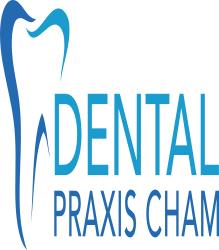Tel:041 787 33 33
Dentistry Inspired by Passion
Hünenbergerstrasse 2 6330 Cham
www.facebook.com/dental.cham
email: info@chamzahnarzt.ch
www.facebook.com/dental.cham
email: info@chamzahnarzt.ch
Dr. med. dent Deniza Ianev
M.Sc. in Dental Prosthetics
M.Sc. in Dental Prosthetics
Dentistry Inspired by Passion
[Home][Our Philosophy][Our Practice][Dental Services][Patient Information][Appointments][Contact Us][Costs][Privacy Policy]

Hünenbergerstrasse 2 6330 Cham
www.facebook.com/dental.cham
email: info@chamzahnarzt.ch
www.facebook.com/dental.cham
email: info@chamzahnarzt.ch



Call now for an appointment


Dental Services
Oral Cancer Screening
EARLY DISCOVERY IS THE KEY
The majority of oral cancers are found in the later stages of development.
When found at an early stage of development (Stage I and II), oral cancers have an 80 to 90 percent survival rate. The problem is that the majority of oral cancers are found in late stages (Stage III and IV), resulting in a mortality rate of 43 percent at a five-year diagnosis (for all stages combined).
Why is oral cancer usually found so late?
It is not because oral cancer is hard to discover or dignose, it is because of a lack of public awareness and the simple fact that there is not a comprehensive program to opportunistically screen for the disease.1
Study results have shown that a COE (Clinical Oral Examination) alone may not detect and discriminate reliably between benign, dysplastic lesions and OSCC (oral squamous cell carcinoma). Some mucosal, dysplastic, or even early stage cancer lesions may manifest in mucosa that appears to be normal clincally.2
1Oral Cancer Foundation
2Epstein et al. The Limitations of the clinical oral examination in detecting dysplastic oral lesions and oral squamous cell carcinoma. The Journal of American Dental Association, 2012; 143(12):1332-1342.
The majority of oral cancers are found in the later stages of development.
When found at an early stage of development (Stage I and II), oral cancers have an 80 to 90 percent survival rate. The problem is that the majority of oral cancers are found in late stages (Stage III and IV), resulting in a mortality rate of 43 percent at a five-year diagnosis (for all stages combined).
Why is oral cancer usually found so late?
It is not because oral cancer is hard to discover or dignose, it is because of a lack of public awareness and the simple fact that there is not a comprehensive program to opportunistically screen for the disease.1
Study results have shown that a COE (Clinical Oral Examination) alone may not detect and discriminate reliably between benign, dysplastic lesions and OSCC (oral squamous cell carcinoma). Some mucosal, dysplastic, or even early stage cancer lesions may manifest in mucosa that appears to be normal clincally.2
1Oral Cancer Foundation
2Epstein et al. The Limitations of the clinical oral examination in detecting dysplastic oral lesions and oral squamous cell carcinoma. The Journal of American Dental Association, 2012; 143(12):1332-1342.
Our Promise to our patients.
It is our mission here at Dental Praxis Cham to do all we can to give our patients the peace of mind that they have been properly screened for this insidious disease. During our routine clincial oral examinations, we use a screening device based upon a proven, optically based technology called "fluorescence technology."
It is our mission here at Dental Praxis Cham to do all we can to give our patients the peace of mind that they have been properly screened for this insidious disease. During our routine clincial oral examinations, we use a screening device based upon a proven, optically based technology called "fluorescence technology."

This fluorescence technology uses a blue light (435–460 nm) that allows a clinician to identify oral cancer, pre-cancer and other abnormal lesions at an earlier stage, thus saving lives. The medical applications of fluorescence technology is well proven and widely used to include diagnosis of the GI tract, cervix, lung, skin and oral mucosa.
Did you know that ...
Forty percent of oral cancers are found in patients who do not present with any of the traditional risk factors or any other significant lifestyle risks?
• The traditional risk factors of oral cancer include:
• Previous history of oral cancer
• Over 40 years of age
• Alcohol
• Smoking
• Smokeless tobacco
This means all patients, regardless of age and lifestyle, need an oral exam that looks closely for abnormal tissue.
Did you know that ...
Forty percent of oral cancers are found in patients who do not present with any of the traditional risk factors or any other significant lifestyle risks?
• The traditional risk factors of oral cancer include:
• Previous history of oral cancer
• Over 40 years of age
• Alcohol
• Smoking
• Smokeless tobacco
This means all patients, regardless of age and lifestyle, need an oral exam that looks closely for abnormal tissue.

Problem: 63% of all cancers found were found Stages III-IV
According to the Oral Cancer Foundation, here are some statistics to consider:
• Oral cancer's incidence rate has increased the last five years in a row.
• In 2007, oral cancer's incidence increased by 11 percent.
• The mortality rate for oral cancer has not changed significantly in three decades.
• Oral cancer's high mortality rate is due to late-stage discovery (Stage III and IV).
• The mortality rate for oral cancer is higher than the rates for cervical cancer, Hodgkin's lymphoma, laryngeal cancer,
testicular cancer, thyroid cancer and skin cancer.
Connection Between HPV and Oral Cancer.
• Human papillomavirus (HPV) is the fastest growing oral cancer population.
• Three out of four people are infected with HPV at some point in their lives
• Oral HPV increases your risk for oral cancer fiftyfold3
• Any prior infection with HPV-16 increases your risk for oral cancer ninefold3
• Having six or more oral sex partners makes you 8.6 times more likely to get oral cancer4
• 60 percent of oropharyngeal cancer is HPV related3
• 90 percent of HPV+ oral cancers are HPV-163
• HPV can be transmitted from mother to child
3American Cancer Society, Cancer Facts & Figures 2012
4Mount Sinai Medical Center, New York (C) 2011
• Oral cancer's incidence rate has increased the last five years in a row.
• In 2007, oral cancer's incidence increased by 11 percent.
• The mortality rate for oral cancer has not changed significantly in three decades.
• Oral cancer's high mortality rate is due to late-stage discovery (Stage III and IV).
• The mortality rate for oral cancer is higher than the rates for cervical cancer, Hodgkin's lymphoma, laryngeal cancer,
testicular cancer, thyroid cancer and skin cancer.
Connection Between HPV and Oral Cancer.
• Human papillomavirus (HPV) is the fastest growing oral cancer population.
• Three out of four people are infected with HPV at some point in their lives
• Oral HPV increases your risk for oral cancer fiftyfold3
• Any prior infection with HPV-16 increases your risk for oral cancer ninefold3
• Having six or more oral sex partners makes you 8.6 times more likely to get oral cancer4
• 60 percent of oropharyngeal cancer is HPV related3
• 90 percent of HPV+ oral cancers are HPV-163
• HPV can be transmitted from mother to child
3American Cancer Society, Cancer Facts & Figures 2012
4Mount Sinai Medical Center, New York (C) 2011




Office Hours
Monday - Friday
8AM to 6PM
Evening and Saturday Appointments Upon Request
Monday - Friday
8AM to 6PM
Evening and Saturday Appointments Upon Request





















